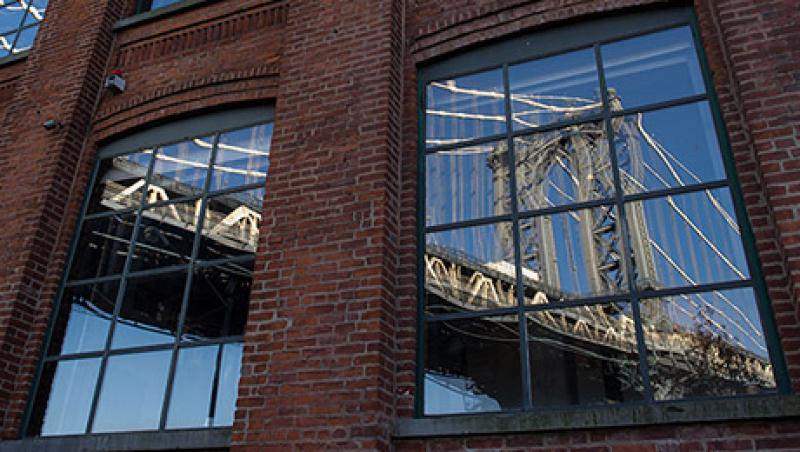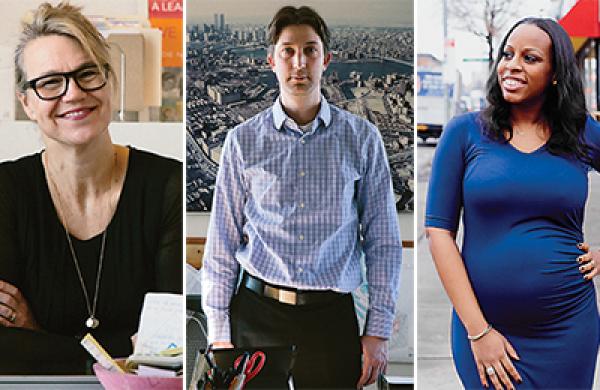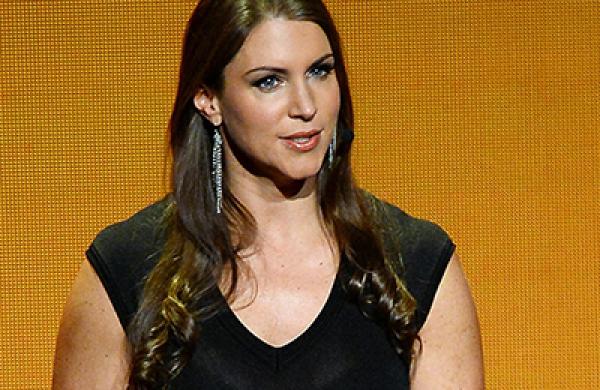One late afternoon in the summer of 2009, I was walking down Wythe Avenue, a thoroughfare in Brooklyn’s Williamsburg neighborhood still lined with warehouses that were home to vintage clothing and indie-band practice spaces and peppered with a few bars and restaurants. At this point, Williamsburg had earned a reputation as the home of a global youthquake of fashion, music and culture. Two blocks farther in from the East River was its epicenter: Bedford Avenue, where Scandinavian scenesters poured out of the L subway stop to sashay down what was perhaps this era’s equivalent of London’s Carnaby Street in the ‘60s. One of these Nordic tourists somehow got lost and wound up on Wythe. She stopped me to ask, “Where is the cool part?”
That question was prescient. At roughly the spot where this encounter took place six years ago, there now stands a J. Crew. The apparel chain has style, to be sure, but it is hardly a bastion of the avant-garde. A block from the river, on Kent Avenue, grimy cinder block music venues such as Death by Audio and Glasslands Gallery helped a handful of major-label signees get their start; those clubs no longer exist. VICE Media, based several blocks north, is taking over the area for its new headquarters. Farther up Kent (and on parts of Wythe as well), the streets are encrusted with rows of glass-clad high-rise apartment buildings with rents hovering around $5,000 per month, made possible by a 2005 change in the zoning laws allowing residential towers of up to 40 stories.
Similar developments are popping up elsewhere in the new Brooklyn, especially in neighborhoods along the East River: Greenpoint, nestled between Williamsburg and Superfund site Newtown Creek; near the Brooklyn Navy Yard in Clinton Hill and Fort Greene; and further inland, along what has been, until recently, the gentrification-resistant swath of Fourth Avenue between newcomer Barclays Center and Park Slope, whose brownstones attracted the affluent long before Sex and the City’s Miranda was wrinkling her nose at the thought of such a move. With development has come local investment. As my colleague Imogen Rose-Smith points out in her feature “An Urban Revival Grows in Brooklyn,” small businesses have lent Brooklyn much of its charm. To be sure, new businesses taking shape in the Brooklyn Navy Yard (which, after decommissioning in 1966, ceased shipbuilding in the early 1980s) and amid the tech boom in DUMBO do offer promise. And the Business Improvement Districts working on downtown Brooklyn are doing a bang-up job attracting independent businesses to a commercial center devoid of many dining options beyond a pay-by-the-pound Chinese buffet and a global French bakery chain.
Yet the fact remains: It is still Brooklyn. As evidenced by crowds of people on Brooklyn-bound subways who haul groceries from the Whole Foods Market and Trader Joe’s on 14th Street in Manhattan, rather than shop at a neighborhood store, some of the spoils of the new Brooklyn have yet to trickle down to longtime residents — if they ever will. On Brooklyn-focused blogs, barely a month goes by without news of a neighborhood fixture such as a coffee shop or restaurant falling prey to rent hikes. Tea Lounge, an expansive space in Park Slope that served coffee, tea and free Wi-Fi to yuppie parents and freelancers who would occupy a seat for hours on end, shut its doors in December after 14 years in business. The owner told the New York Daily News, “There are tons of empty stores here because landlords think they deserve Manhattan prices.” Will the same happen with high-rise real estate developments whose main distinguishing factor is the color of the granite on the kitchen counters?
Over the past decade, Brooklyn has become a globally recognized imprimatur of cool. Brooklyn Bowl, a music venue-slash-bowling alley-slash-restaurant in Williamsburg, has outposts in London and Las Vegas. Brazilian, British, French and German journalists I’ve met at press events in New York invariably stay in Williamsburg. While perhaps not the most budget-friendly locale, it’s a name they recognize on Craigslist. And apparently in Paris, calling something “très Brooklyn” is a compliment of the highest order. When I was looking at Airbnb listings in the 19th arrondissement, one that caught my eye featured a giant poster of the Brooklyn Bridge in the living room. Upon mentioning that I lived in Brooklyn, the hosts rented me their flat tout de suite. Brooklyn is a brand. And brands fetch big bucks — until they go out of style.
According to a StreetEasy study published this past September, more than half of Brooklyn’s neighborhoods saw faster rent increases than Manhattan. The median rents in DUMBO and Williamsburg already are higher than that for all of Manhattan. Rose-Smith references in her story director Spike Lee’s tirade last year against Brooklyn gentrification during a talk at Pratt Institute, located in Brooklyn’s Clinton Hill neighborhood. “But what about the people who are renting? They can’t afford it anymore! You can’t afford it. People wanna live in Fort Greene. People wanna live in Clinton Hill. The Lower East Side — they move to Williamsburg; they can’t even afford fuckin’, motherfuckin’ Williamsburg now because of motherfuckin’ hipsters.”
In 2015, linking Williamsburg with hipsters is about as timely as whipping out your Razr phone to make a call. The nontrustafarian hipsters have been priced out for many years, taking their creative savvy elsewhere, as happened in Tribeca and the Lower East Side. The bohemian lifestyle in Williamsburg (and much of the rest of the East River Brooklyn waterfront, for that matter) is a patina used to hawk condos, with the artists — and the communities that existed before — forced farther and farther out on subway lines increasingly plagued by service cuts. Part of the initial attraction among young entrepreneurs to Brooklyn was the low rent. Annoyances with the daily commute into Manhattan were considered a trade-off. Yet rents of $2,000 per person are hardly low budget, even by New York standards. At what point on the time-is-money equilibrium does Brooklyn hit its peak, sending young people back into Manhattan, leaving behind empty glass towers and shuttered frozen-yogurt stands?
I have faith in Brooklyn. I really do. I’ve built my life there and see myself settling down and raising a family on the verdant stretches of Bay Ridge, the south Brooklyn neighborhood where I live, across the Verrazano-Narrows Bridge from Staten Island. But it does take me an hour to get to work on a good day. Peggy Olson, Mad Men’s protofeminist copywriting phenom, hails from Bay Ridge. Even in 1963, she had reached peak Brooklyn. Making her case for a move to Manhattan, Peggy points out to her mother that each week she spends the equivalent of one workday on the subway. A half century later, the commute remains largely unchanged. Two hours of daily commuting hardly makes for time to build a home, in the residential or community sense.
A few weeks ago, after a commute that lasted a good 90 minutes, I posted on Facebook something that five years ago, during the height of Swinging Brooklyn, would have been anathema: I said I was thinking of moving to the Upper East Side (on two incomes, mind you, not one).
Within an hour, that post racked up a dozen comments echoing my thoughts. Young professionals and entrepreneurs in Williamsburg, Park Slope, Bushwick and Greenpoint have recently had similar complaints. Publications other than Institutional Investor would consider that a trend.
Brooklyn has been fortunate enough to become the cool part of New York. Now that the borough has made it past the opening act, let’s hope the communities have enough material to continue to be the headliner.
Follow Anne Szustek on Twitter at @the59thStBridge.






